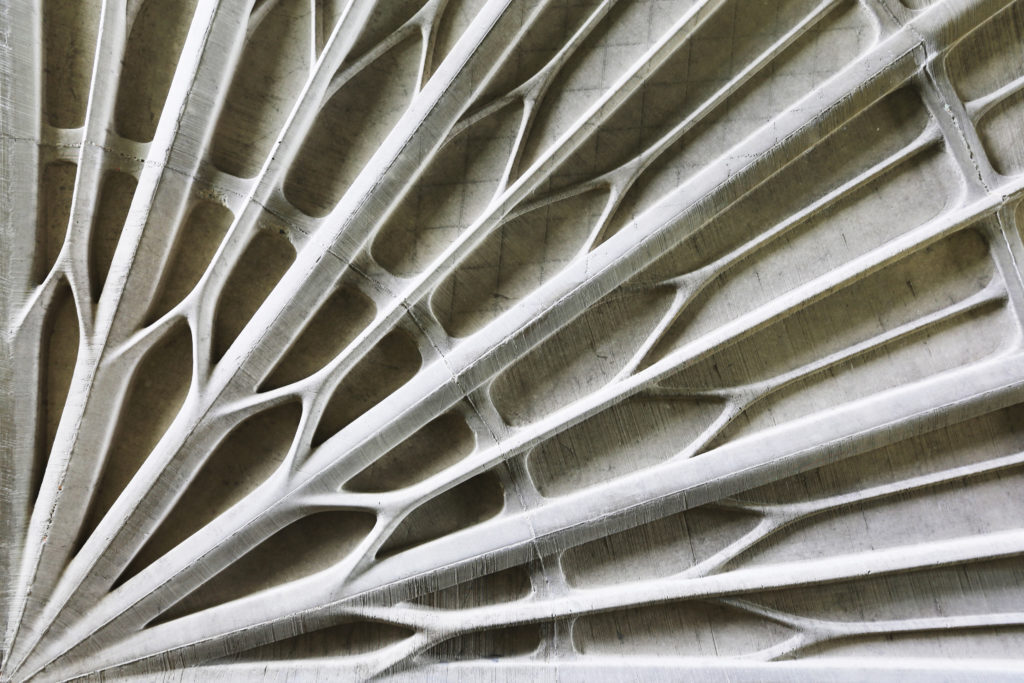22.01.2019
The Floor is Yours
By 2050, the rapid depletion of raw materials will leave the world without enough sand and steel to build in concrete. It is time to RETHINK the design and construction of buildings. In Davos, ETH Zurich unveils a “Functionally integrated floor system.” This novel architectural research demonstrates how historic geometrical designs and new technologies can result in lighter construction and significant savings in raw materials.
A team of ETH Zurich and NCCR Digital Fabrication researchers at the Institute of Technology in the Department of Architecture is developing an integrated structural floor system to address and combat the building industry’s significant contributions to global greenhouse gas emissions and the rapid depletion of natural resources. The structural elements of a multi-storey building account for up to 50% of its embodied energy. In buildings with 10 or more storeys, up to 80% of the weight of that structure is contained in the floor slabs, most commonly built with steel-reinforced concrete. By introducing a materially efficient floor system, the embodied energy of the built environment in the planet’s rapidly growing cities could be reduced significantly. Furthermore, the integration of optimised heating and cooling systems could significantly reduce the operational energy demand in a building.
The Block Research Group develops rib-stiffened funicular floors, which are doubly-curved shells that carry loads efficiently in compression and absorb tension externally in ties rather than in embedded steel reinforcement. This offers a dramatic reduction in the amount of structurally unnecessary concrete by up to 70%. Additionally, the structural geometry results in very low stresses, even in the very thin sections, allowing for the use of weaker materials such as recycled concrete. By carving out the floor slab, leaving only the material that is needed for efficient force transfer in compression, pipes, wires and mechanical systems can be inserted and routed through volumes of the floor that were previously inaccessible.
The Chair of Architecture and Building Systems researches building energy and climate systems and their integration into structural elements in order to increase efficiency and reduce space and costs. This research specifically investigates the integration of an optimised, three-dimensional extension of a hybrid cooling and ventilation system into funicular floor geometries. Synergies with the structural design are achieved by utilizing cavities and geometrical properties of the floor for the efficient routing of air and water for heat transport and air supply. Such a design for optimal flow is made possible by the flexibility of 3D-printing.
Due to the complex structural geometry and high level of integration, the fabrication of such floors in concrete would typically result in wasteful and costly formwork solutions, furthermore requiring complex assembly and removal work. In collaboration with the Chair of Digital Building Technologies, new, efficient formwork solutions based on state-of-the-art 3D-printing technologies are being investigated to create bespoke, thin-walled moulds, used to form the internal duct system as well as the visible lower surface of the floor.
The prototype of the functionally integrated funicular floor system, exhibited in the ETH Zurich Pavilion in Davos during the 2019 World Economic Forum Annual Meeting, shows an efficient floor system, made possible through the use of structural geometry, building systems integration and feasible fabrication methods and collaborative research efforts within the NCCR Digital Fabrication. It aims to demonstrate the vast potential of such new building components to address the grand challenges faced by the building today and even more urgently in the future.
Text: ETH Global
Image: Andrei Jipa



